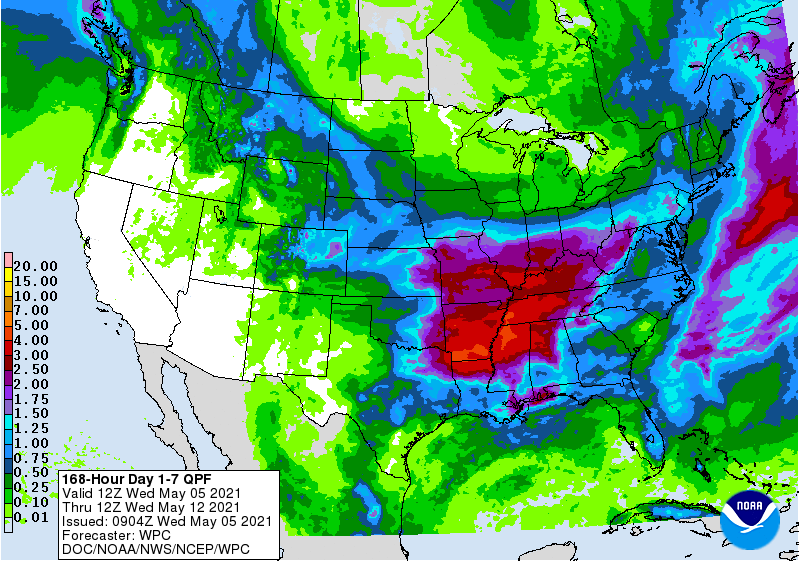2021 Black Cutworm Pheromone Trap Report Form
2021 Black Cutworm Pheromone Trap Report Form

Planting season is at full swing and postemergence (POST) herbicide application season will be here soon with the recent rains we have received.

It seems the weather pattern may have shifted toward wetter conditions. Over the past week, Indiana has received over an inch of rain and the 7-day forecast is predicting at least another inch (Figure 1) in the central and southern parts of the state.

Every spring we receive several calls and e-mails about a certain 3-foot tall weed with yellow flowers (Figure 1). The most common yellow flowered weeds we have in Indiana are cressleaf groundsel, the buttercup species, and dandelion.

Many ruminant livestock producers have used soft red winter wheat as a forage resource, but many more livestock and row crop producers might want to consider this option, too.

It seems that the freezing temperatures, and snow, of just over a week ago has spurred an increase in the black cutworm and armyworm moth activity, see the accompanying pheromone trap captures.

Timing of cover crop termination can have significant benefits in wet and dry springs.

Over the wide variety of planting and soil-applied herbicide situations, most irrigated producers will gain from an early-season irrigation application. The limiting factor is whether the irrigation system is ready to go.
2021 Black Cutworm Pheromone Trap Report Form
Armyworm Pheromone Trap Report – 2021
© 2025 Purdue University | An equal access/equal opportunity university | Copyright Complaints | Maintained by Pest&Crop newsletter
If you have trouble accessing this page because of a disability, please contact Pest&Crop newsletter at luck@purdue.edu.